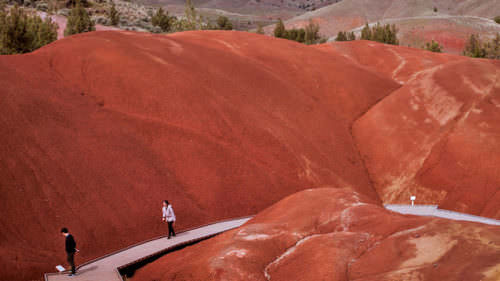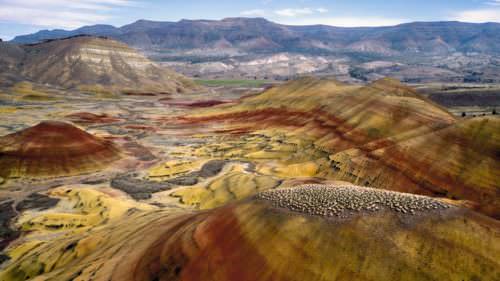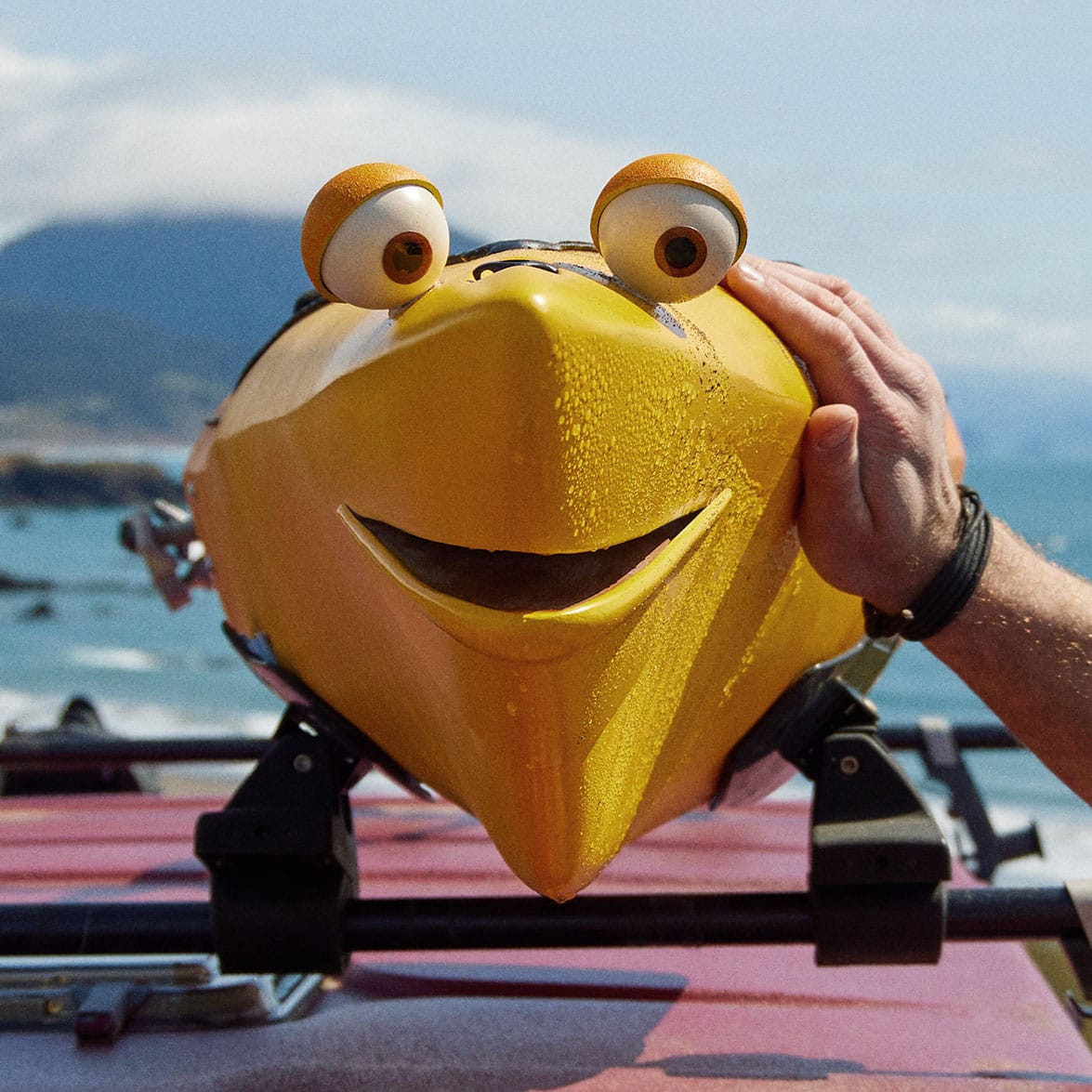Notable for their multihued mineral streaks, Eastern Oregon’s Painted Hills are, without a doubt, the most famous site at the John Day Fossil Beds National Monument. Yet there’s another colorful geological formation in these fossil beds: the Blue Basin, a rocky bowl that’s been shaped and tinted by nearly 40 million years of volcanic history.
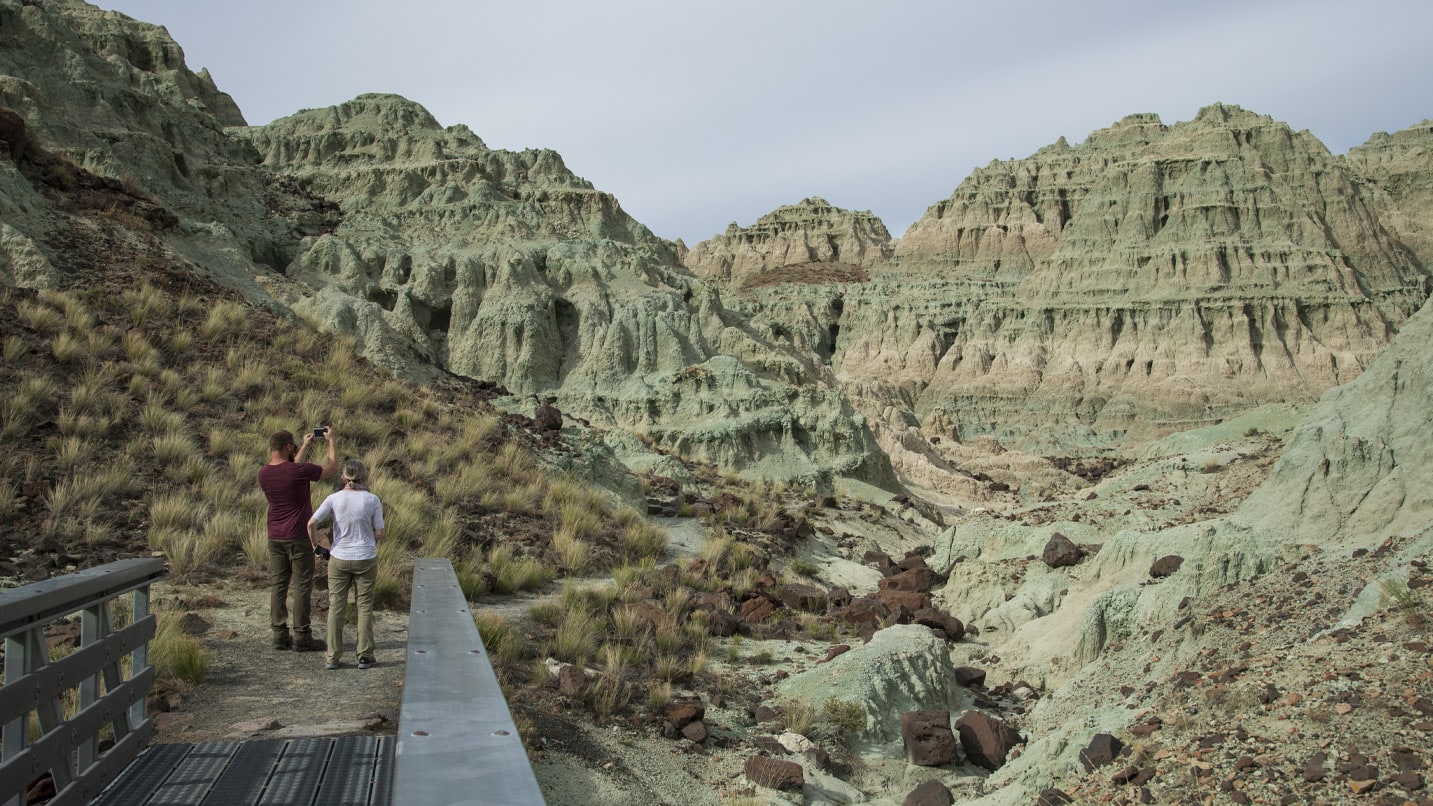
How the Blue Basin Got So Blue
The Blue Basin is actually more seafoam green than blue, but “Light Green Basin” doesn’t have quite the same ring to it. No matter: The colorful rock comprises layers of volcanic ash rich with a mineral called celadonite (pronounced “sell-ah-done-ite”).
Painted Hills park ranger Michelle Ordway says that several unlikely events had to occur for the rock to turn that distinctive hue. First, several volcanic eruptions deposited that celadonite-laden ash, which hardened and weathered, spurred along by hot water moving through alkaline-rich ash beds under high pressure. Over the course of many thousands of years, further erosion revealed the dazzling rocks that give the Blue Basin its name.
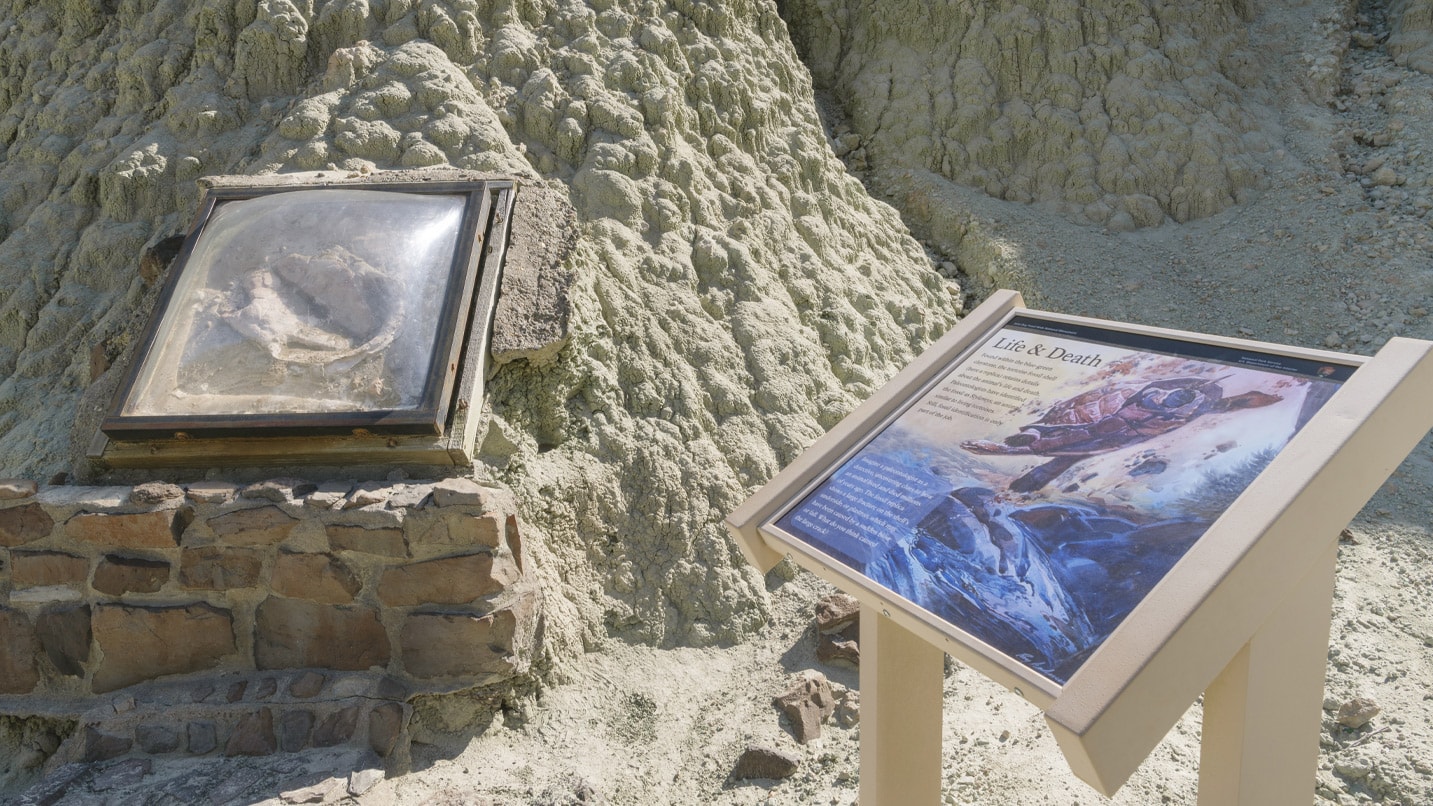
Exploring the Blue Basin
The Blue Basin lies within the Sheep Rock Unit of the national monument, roughly 50 miles east of the Painted Hills. Two hiking trails offer different experiences for exploring it. One heads into the heart of the jagged bowl, while the other is a moderate jaunt that affords views from above. Both are well signed and easy to follow.
The Island in Time Trail is the easier of the two hikes and wastes little time in delivering spectacular views. The 1.3-mile out-and-back trail remains on the canyon floor as it heads into the basin, ringed by angular rocks and jagged formations. It gains 200 feet along the way and passes interpretive panels that explain the natural history of the region, as well as fossil replicas that show off just why the fossil beds were declared a national monument in 1975.
The second trek is the 3.25-mile Blue Basin Overlook Trail, which forms a loop as it ascends 750 feet around the edge of the basin. A viewpoint peers into the uncanny landscape below, and sweeping vistas of the surrounding John Day River valley are a welcome bonus. As the path descends to the base of the canyon, it connects to the Island in Time Trail — making it easy to tackle both trails in just a few hours.
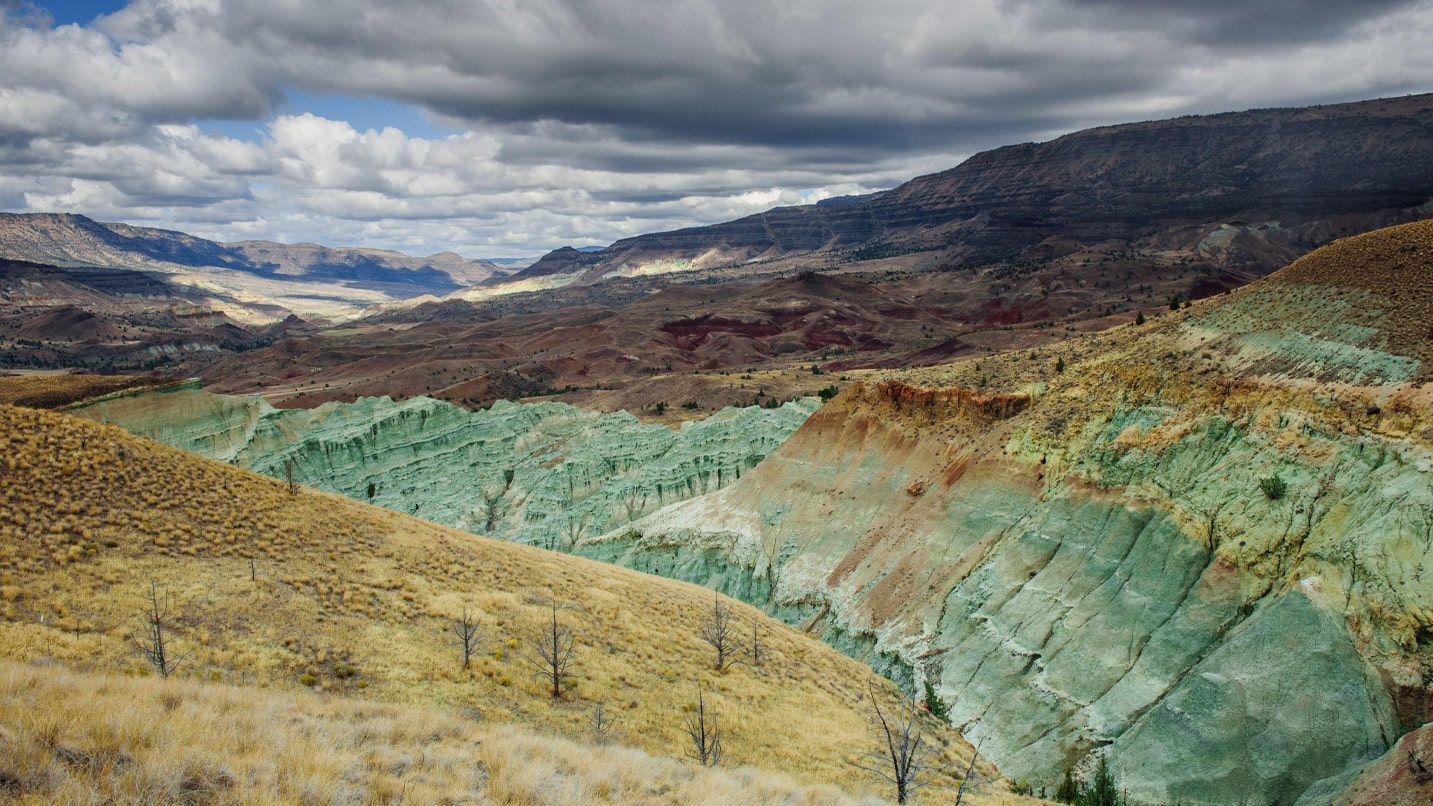
Having Fun and Staying Safe
Once you’ve read up on how to Take Care Out There in Oregon, follow these tips for an enjoyable outing:
Keep your cool: Temperatures in and around the Blue Basin can easily top 90 degrees Fahrenheit in summer, and shade is nearly nonexistent on either trail. Try to start hiking by 9 a.m., wear a long-sleeve shirt and a hat, apply sunscreen, and bring plenty of water. Ordway suggests sunrise or sunset hikes for cooler temperatures and to take advantage of the golden hours, when softer light makes the Blue Basin all the more photogenic.
Consider leaving your dog at home: Leashed dogs are permitted on both trails at the Blue Basin. But Ordway cautions against it, at least on summer afternoons when there’s no escaping the heat. The sweltering clay footpath and steel-grate bridges can actually burn a pooch’s paws.
Keep to marked trails: Stay on the trail and away from the jagged rock, which is susceptible to erosion. “Being respectful of the landscape will keep you safe,” says Ordway. And while it may be tempting to go off-trail and in search of fossils, removing them is illegal.
Take time to listen: For Ordway, part of the Blue Basin’s less-traveled charm is just how eerily quiet it can be. She encourages hikers to slow down, take some time and immerse themselves in the unusual landscape. “Sit still and really listen,” she says. “So many people never hear quiet anymore, but you can hear it out here.”
